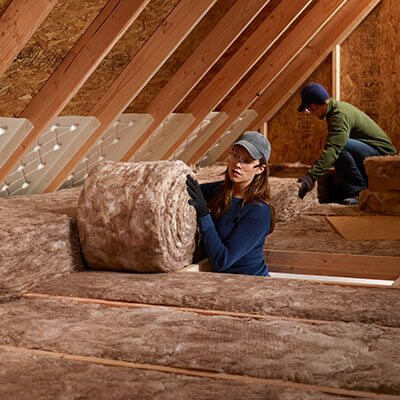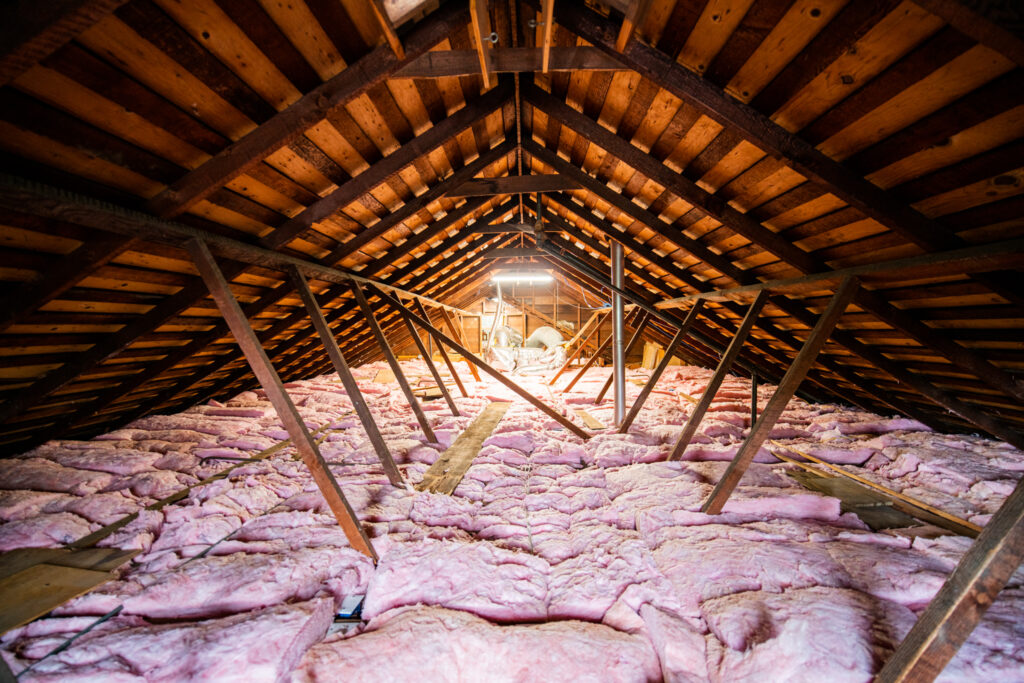Attic Insulation DFW: Increase Your Home's Worth and Effectiveness
Attic Insulation DFW: Increase Your Home's Worth and Effectiveness
Blog Article
Discover the Various Sorts Of Attic Insulation and Their Unique Advantages for Your Home's Power Effectiveness

Fiberglass Insulation
Fiberglass insulation is among one of the most typically used materials for attic room insulation due to its superb thermal performance and cost-effectiveness. Composed of little glass fibers, this material properly traps air, producing an insulating barrier that assists keep consistent indoor temperature levels. Its high R-value per inch makes it particularly efficient at resisting warmth transfer, which is vital for energy preservation in homes.
Installation of fiberglass insulation is fairly simple, often readily available in batts or loose-fill forms, fitting different attic room setups. In addition, it is resistant and non-combustible to moisture, minimizing the threat of mold development. This sturdiness contributes to its longevity, making fiberglass a feasible lasting financial investment for homeowners.
Moreover, fiberglass insulation is typically produced from recycled products, which enhances its eco-friendliness. The product can additionally add to soundproofing, minimizing sound transfer between spaces. While it is important to put on protective equipment throughout setup to prevent inflammation from the fibers, the total benefits of fiberglass insulation, including energy financial savings and environmental factors to consider, make it a prominent option for improving attic performance and promoting a comfortable living setting.
Spray Foam Insulation
Spray foam insulation is an extremely efficient alternative for attic insulation, known for its superior air securing and thermal performance. This cutting-edge insulation product is composed of a combination of isocyanate and polyol material, which, when integrated, expands rapidly to fill up gaps and cavities in the attic room space. Its capacity to stick to numerous surfaces guarantees a continual obstacle against air leakages, considerably lowering warmth loss during cooler months and heat gain during warmer periods.
One of the vital benefits of spray foam insulation is its high R-value per inch, which suggests it offers excellent thermal resistance in a reasonably thin application. This is particularly useful in attics where room is typically limited. In addition, spray foam can help decrease wetness buildup, decreasing the threat of mold and mildew and mold development, which can be harmful to both the framework and indoor air quality.
While the initial expense of spray foam insulation may be more than conventional choices, its long-lasting power cost savings, coupled with increased comfort and boosted home worth, make it a worthwhile financial investment for homeowners seeking improved energy performance. Attic Insulation DFW. Generally, spray foam insulation attracts attention as a reliable solution for optimizing attic insulation
Cellulose Insulation

Cellulose insulation is a preferred option for attic insulation, primarily composed of recycled paper products treated with fire discover this resistants. This eco friendly choice is known for its excellent thermal performance, effectively reducing heat transfer in both summer and wintertime months. The thick composition of cellulose enables it to fill voids and voids in attic room rooms, giving a seamless obstacle versus air leaks.
Among the substantial advantages of cellulose insulation is its capacity to withstand mold and pests, check that owing to the fire resistant treatments utilized throughout manufacturing. In addition, it boasts a high R-value per inch, which converts right into exceptional power efficiency. Property owners can anticipate lower home heating and air conditioning costs as an outcome of boosted insulation.
Setup is typically completed via blowing loosened cellulose into the desired location, allowing for a reliable and quick process. This method also decreases disruption to the existing structure. Cellulose insulation has a reasonably low ecological effect, as its production process utilizes recycled materials, contributing to sustainable building practices.
Rock Wool Insulation
Amongst the different alternatives for attic room insulation, rock wool, likewise recognized as mineral woollen, stands out due to its impressive thermal and acoustic efficiency. Made from recycled or all-natural products, rock woollen is created by melting rock and spinning it right into fibers, resulting in an item that provides exceptional insulation buildings.
Among the considerable benefits of rock wool insulation is its high R-value, which suggests its performance in standing up to warm flow. This particular not just boosts power effectiveness but also adds to maintaining a comfortable indoor temperature year-round. Furthermore, rock woollen is inherently fire-resistant, making it a more secure choice for homes as it can endure heats without melting or launching harmful fumes.
Moreover, rock woollen insulation stands out in soundproofing abilities, successfully reducing sound transmission in between spaces and from outside resources. Overall, rock woollen insulation provides a detailed solution for enhancing power efficiency, security, and comfort in domestic settings.
Radiant Barrier Insulation
Glowing barrier insulation offers as an effective remedy for lessening warm transfer in attic rooms, specifically in warmer environments. This type of insulation jobs by mirroring convected heat far from living rooms, thus lowering the quantity of warmth that gets in a home throughout warm weather - Attic Insulation DFW. Typically composed of a very reflective product, such as light weight aluminum foil, radiant obstacles are mounted in Full Article attics, facing the roofing system, where they can intercept incoming heat from the sunlight
The primary benefit of radiant obstacle insulation is its capacity to lower air conditioning expenses. By showing warm rather than absorbing it, glowing obstacles can assist keep a more stable indoor temperature, minimizing the workload on air conditioning systems. This efficiency equates right into reduced power costs and enhanced comfort for home owners.
In enhancement to energy cost savings, glowing obstacles can also add to improved indoor air quality. By reducing warm buildup, they assist reduce moisture levels, which can avoid mold growth and improve general air flow. When installed properly, radiant obstacle insulation can be an invaluable addition to any energy-efficient home, making it a worthy consideration for home owners looking to enhance their attic insulation approach.
Final Thought
In final thought, comprehending the numerous types of attic room insulation-- fiberglass, spray foam, cellulose, rock wool, and radiant barriers-- allows homeowners to make informed choices relating to energy efficiency. By picking the appropriate insulation product, significant decreases in power expenses can be accomplished, along with improvements in interior convenience.

In conclusion, recognizing the different kinds of attic room insulation-- fiberglass, spray foam, cellulose, rock woollen, and radiant barriers-- allows home owners to make informed decisions regarding power efficiency.
Report this page